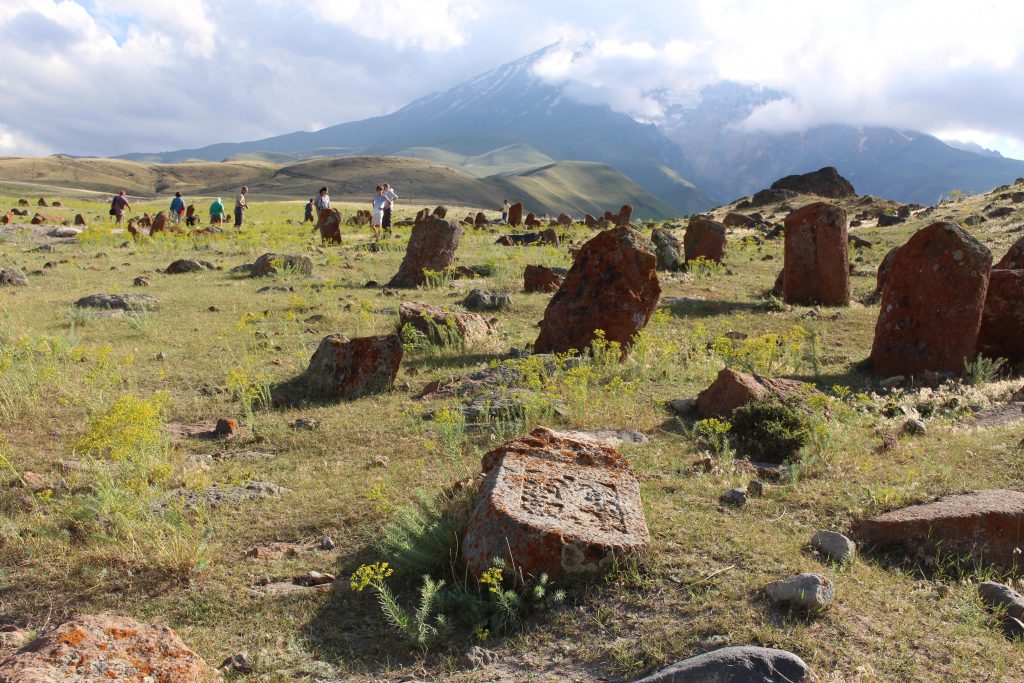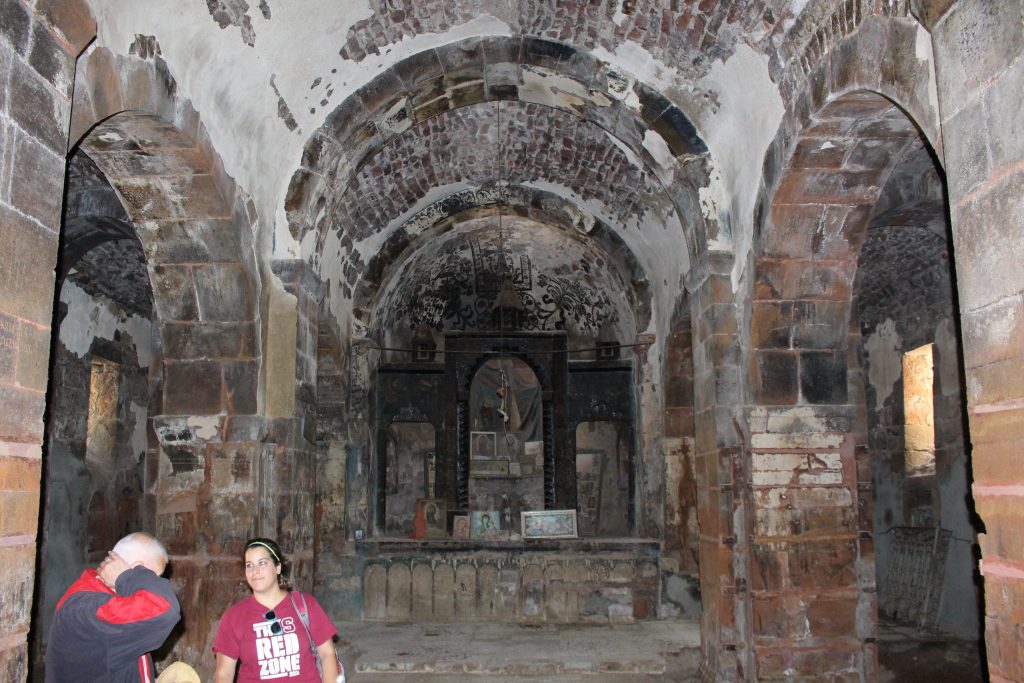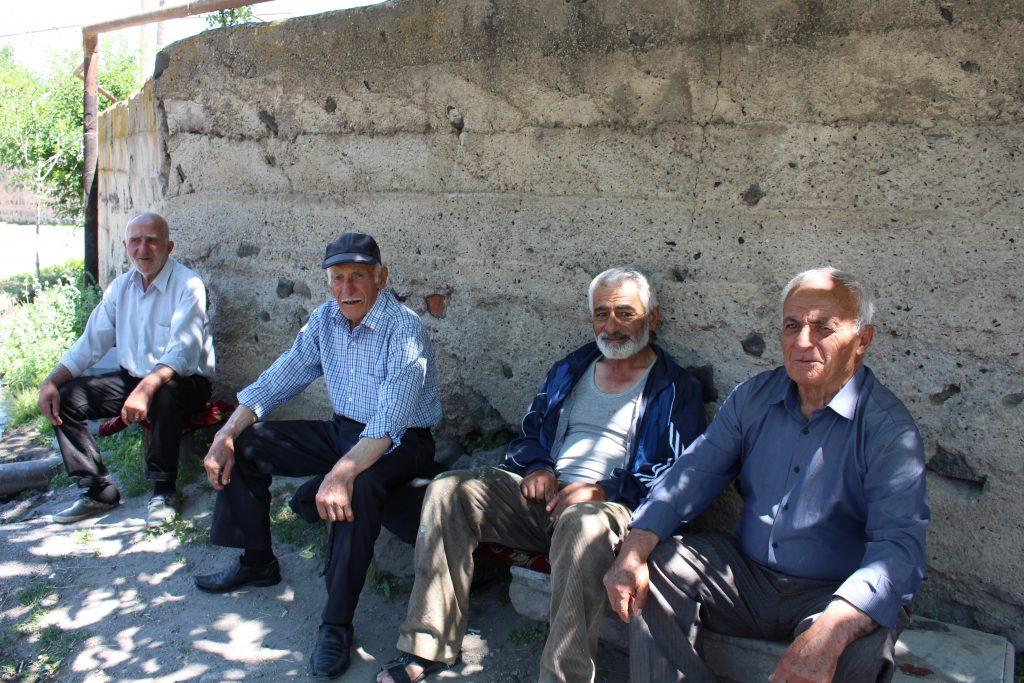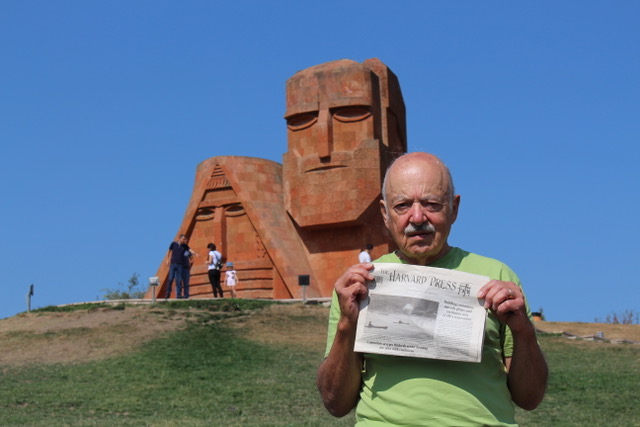Friedrich Parrot of the University of Dortmund, Germany, accompanied by his translator and author, Khachatur Abovian, made the first documented ascent of Mount Ararat in October 1829. Parrot visited Akori before the earthquake, writing that the monastery was built in 1288, as evidenced by an inscription on the wall. Perhaps there were a series of renovations to the monastery, and the date indicated a recent one.

Parrot cites a population of about 175 families living in firmly built stone houses. Cattle and horse breeding was a major occupation, with the wealthier families also maintaining vineyards outside the village. Corn was grown at a location where the soil was more suitable than the Akori’s rocky soil. The summer weather was pleasant, and the Persian military governor (sardar) had a rest house nearby.
F. B. Lynch, an English Member of Parliament and explorer, visited Eastern and Western Armenia on two separate trips. He climbed Mount Ararat, visiting Akori in 1898, after the earthquake. Lynch, in his two volume Armenia, Travels and Studies, described a lone vine growing where no other vegetation survived. Villagers, he said, believe it sprouted from a plank of the arc. Lynch cited a population of about 1,000 people before the earthquake. He indicated that a church, Arakelots Vank, was built on the site of Noah’s altar. He also indicated that Surb Hakob (Saint James) was a contemporary and relative of Saint Gregory and later became Bishop of Nisibis.
Lynch was able to interview survivors of the earthquake who described the violent shaking of the earth, and a hurricane of black debris engulfing the chasm in which Akori was situated. All of this was followed by another earthquake with a flood of water bursting out from the side of the Ararat on June 24. Lynch presents some theories as to whether this was an earthquake or some type of volcanic eruption, perhaps of steam rather than molten lava.


In 2016, I visited Akori as part of a small tour to Western Armenia conducted by Arevi Tours in Armenia. We encountered no difficulties, either from officials or the condition of the roads; our vehicle was a four-wheel drive minivan. We arrived at the Akori cemetery, below where the village was. My photographs of the rocky chasm where the village was situated were remarkably similar to a photograph in Lynch’s book. The chasm appeared to be filled with boulders and rubble. The view of Ararat’s summit, with turbulent clouds swirling about, hiding and then revealing Ararat’s peak, was spectacular. The cemetery still had khachkars over the gravesites. In a shallow valley below the cemetery, near the road, was the very small Kurdish village of Yenidogan[1]; only a decade or two old, according to what I was told.

The memorialization of the Akori earthquake, the date of Kamaris’s Surb Hakob church, and the fact that Surb Hakob was both the name of the monastery on the outskirts of Akori and the church in Kamaris, led us to believe there was a strong connection between the two villages. At the center of Kamaris we found a group of men sitting by the side of the road. We asked them about this connection. Indeed, they said, survivors from Akori migrated to Kamaris and built the church. They subsequently left Kamaris, preferring to live in Ijevan and Dilijan, but often visit Kamaris to pay their respects to family members who are buried in Kamaris’s cemetery.
A villager apparently wrote a history of Kamaris, but it would probably be difficult to find a copy, though I’ll try. An inquiry at Yerevan’s Matenadaran revealed that they do have one or more manuscripts from Surb Hakob Vank in Akori, though these are not on display and probably accessible only to scholars.
Notes
[1] Yenidogan is Turkish for newborn.

1 Comment To "Unseen Armenia: Kamaris and Akori (Part II)"
#1 Comment By David Karamian On August 29, 2017 @ 3:11 pm
Great story! Wish we knew more about the history of that area.